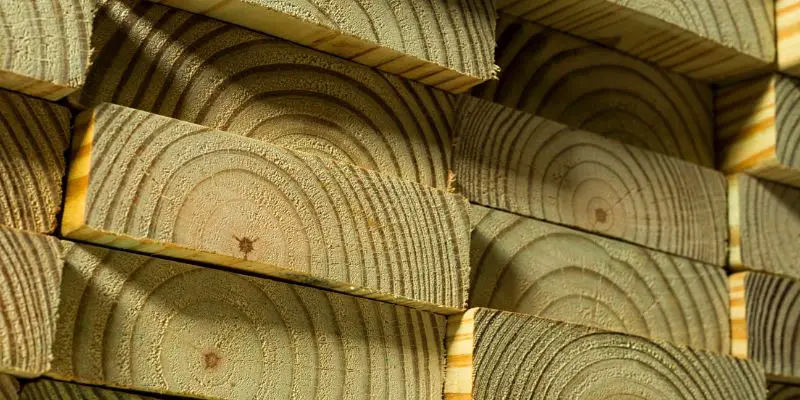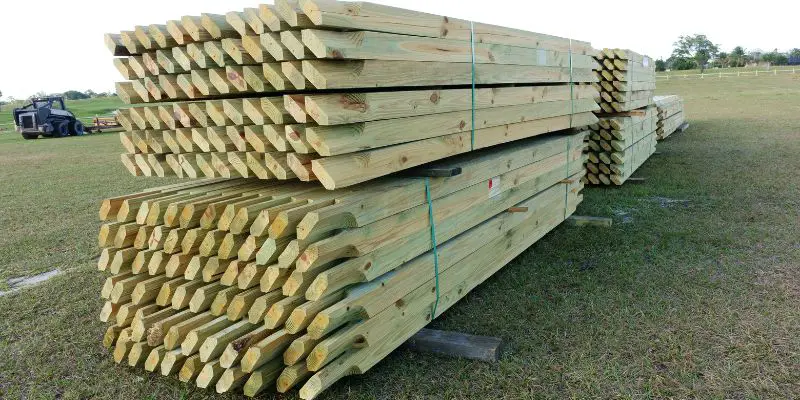Pressure-treated wood should not be used indoors due to the potential release of harmful chemicals. However, it is widely used for outdoor projects such as decks, fences, and landscaping.
Using Pressure Treated Wood Indoors
Pressure-treated wood is commonly used for outdoor projects such as decks, fences, and raised garden beds. But can you use pressure-treated wood indoors? This is a question that often arises when homeowners are considering using this type of wood for interior projects. In this article, we will explore what pressure-treated wood is, the pros and cons of using it indoors, and ultimately help you make an informed decision for your specific needs.

What Is Pressure Treated Wood?
Pressure-treated wood refers to lumber that has undergone a process where it is infused with chemicals to enhance its durability and resistance to insects, rot, and decay. This process involves placing the wood in a pressure chamber and applying chemicals under high pressure. The most common chemical used is chromated copper arsenate (CCA), although alternative chemicals such as alkaline copper quaternary (ACQ) or copper azole (CA) have become more popular due to environmental concerns.
Pros Of Using Pressure-Treated Wood Indoors
Using pressure-treated wood indoors has its fair share of advantages. Here are some of the pros:
- Increased lifespan: Pressure-treated wood is well-known for its ability to withstand harsh outdoor conditions, which means it will also offer a longer lifespan when used indoors. This can be particularly beneficial in areas with high humidity, such as bathrooms or basements.
- Resistance to insects and decay: The chemical treatment of pressure-treated wood creates a barrier that deters insects and prevents rot and decay. This can be advantageous if you are concerned about potential pest infestations or moisture damage.
- Cost-effectiveness: Pressure-treated wood is generally more affordable than other types of wood that offer similar levels of durability and resistance. It can be a practical choice if you are on a budget but still want a long-lasting material.
Cons Of Using Pressure-Treated Wood Indoors
While pressure-treated wood may seem like a versatile choice for indoor projects, there are some drawbacks to consider:
- Chemical exposure: The chemicals used in pressure-treated wood, although effective in preserving the wood, can potentially release toxins into the air. This can be a concern, especially in enclosed spaces with poor ventilation. It’s important to note that modern pressure-treated wood alternatives, such as ACQ or CA, have lower toxicity levels compared to CCA.
- Appearance: Pressure-treated wood tends to have a distinct greenish tint due to the chemicals used in the treatment process. This may not suit everyone’s aesthetic preferences, especially for interior projects where a more natural or decorative look is desired.
- Limited variety: Pressure-treated wood is primarily available in a limited range of sizes and dimensions, which may not be conducive to certain indoor projects that require precise measurements or customizations.
Now that you are familiar with the pros and cons of using pressure-treated wood indoors, you can make an informed decision based on your specific needs and preferences. Consider factors such as the location of the project, desired lifespan, and the potential impact on indoor air quality. It is also advisable to consult with a professional or knowledgeable supplier to ensure you choose the most suitable type of wood for your indoor project.

Frequently Asked Questions For Can You Use Pressure Treated Wood Indoors
Is It OK to Use Pressure-treated Wood Indoors?
No, it is not recommended to use pressure-treated wood indoors. The chemicals used in pressure treatment can be toxic indoors. It is best to use alternative wood options that are safe for indoor use.
Where Not To Use Pressure-treated Wood?
Pressure-treated wood should not be used in interior applications such as indoor furniture or flooring. It should also be avoided in areas where it may come into direct contact with food or drinking water. Additionally, it’s not suitable for use in playground equipment or decks that may be frequently exposed to bare skin.
How Long Does Pressure-treated Wood Last Indoors?
Pressure-treated wood can last indefinitely indoors since the treatment protects against decay and insect damage. However, its lifespan may vary depending on factors like wood quality, environmental conditions, and maintenance. With proper care and maintenance, pressure-treated wood can provide long-lasting durability and structural stability indoors.
How Long Does It Take For Pressure-treated Wood To Dry Indoors?
Pressure-treated wood typically takes about 2 to 6 months to dry indoors. It depends on the thickness, moisture content, and temperature. Proper ventilation and air circulation can speed up the drying process.
Conclusion
Pressure-treated wood can be used indoors, but caution should be exercised. While the treatment protects against rot and insect damage, the chemicals present in the wood can be harmful if not handled properly. It is important to ensure proper ventilation and avoid direct contact with the wood.
Additionally, it is advisable to seal the wood to minimize the release of chemicals. Ultimately, using pressure-treated wood indoors requires careful consideration and adherence to recommended safety guidelines.



3 thoughts on “Can You Use Pressure Treated Wood Indoors? Discover the Pros and Cons!”